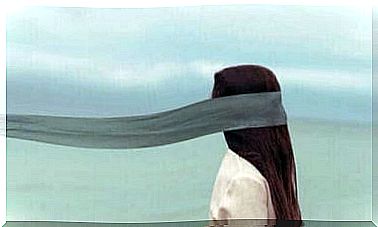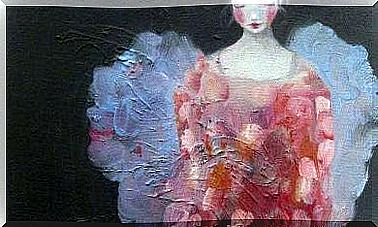What Is The Paradoxical Intention Technique?

The tools that psychologists work with are what we call psychological techniques. These techniques should only be used by mental health specialists. A clear example of these techniques is the paradoxical intention technique.
More often than not, these techniques are useful for psychological treatments and interventions. Furthermore, psychological treatments can belong to different psychology disciplines. For example, cognitive behavior, systematics, Gestalt and psychoanalysis, among others.
In this sense, psychological treatment is a professional intervention. This intervention is based on clinical psychological techniques. For example, a hospital, private consultation, support groups, and mental health centers, among others. During these treatments, a specialist seeks to eliminate the patient’s disorder.

Some examples of this could be helping someone overcome depression, teaching family members to communicate better, or even teaching a teenager to relate to their classmates in a less aggressive way.
A psychological treatment involves listening closely to what the patient has to say. In addition, the therapist must identify the personal, social and family aspects that generate the problem. The psychologist must also tell the patient how to solve their problems and use specific techniques.
Here are some examples of these psychological techniques:
- Breathing and relaxation exercises.
- Paradoxical intention.
- Resolution of interpersonal problems.
- Questions of false faith.
- Social skills training.
Psychological treatments must be performed by psychologists, who are professionals in behavioral problems. These professionals use evaluation and treatment techniques that have been supported by scientific data.
The paradoxical intention technique
This technique is a form of humanistic psychotherapy attributed to Victor Frankl’s logotherapy (1999).
In cognitive behavioral therapy, paradoxical intention is the cognitive intervention used to overcome resistance to change.
To define this technique, we must assume that a paradox is the opposite of what we consider to be true. A paradox, from the Latin word paradoxus (which also has a Greek origin), consists of using conflicting expressions.
In other words, beyond conflicting circumstances, the factors presented are valid, real or possible. The paradoxical intention technique seeks to confront the patient’s common sense. With the use of paradoxical intention, therapy can encourage a patient to do what they are afraid of (Frankl, 1984).

The overriding goal of paradoxical intention
The overall goal of paradoxical intention is to provoke certain changes in the patient’s attitude and their reactions to stress. This means that it tries to eradicate vicious cycles that the patient’s fear develops.
Here is an example to help you better understand this concept. A sleepless patient makes an effort to fall asleep every night. With paradoxical intention, this same patient will now do the opposite. They need to concentrate on trying to stay awake for as long as possible.
This allows the patient to forget how difficult it is for them to fall asleep. This way, they will fall asleep because they will stop fighting to fall asleep much sooner.
Why does this technique work?
Despite its effectiveness, there are no clear studies that study the rationale behind it. However, there are some models that try to explain its effects.
Certain variants of the technique use control mechanisms to stimulate behavioral responses. Other cases suggest that they change expectations and increase our self-efficacy.
Here are some of the theoretical models that seek to describe the technique:
- Double volume theory (Watzlawick, Beavin and Jackson, 1981)
- Symptom decontextualization theory (Omer, 1981)
- Recursive anxiety theory (Ascher and Schotte, 1999)
- Ironic process theory (Wegner, 1994)

How to use the paradoxical intention technique?
Using this technique, patients are advised not to try to stop their symptoms and even to exaggerate them.
The procedure requires two changes in the way the patient is currently treating problems. The first change is that the patient must stop trying to control the problem. On the other hand, the patient must increase the symptoms and exaggerate them.
Both go against the patient’s logic. Therefore, the therapist must explain this new concept to the patient to convince them that it will be useful for the treatment.
Approach
- Evaluation of the problem.
- Redefining the symptoms according to the evaluation data. In this step, the psychologist seeks to give new meanings to the symptoms.
- Indication of the paradoxical changes depending on the problem.
- Conceptualization of the changes according to the paradox.
- Relapse prevention.
- Follow-ups.
The effectiveness of the paradoxical intention technique
Despite its usefulness, it can be one of the difficult techniques used in cognitive behavioral therapy. Apart from knowing the logic behind it and the procedure, the therapist must have enough experience to discover the right moment to apply it.
Thus , the therapist’s communication skills and clinical experience will determine the success of this treatment. The therapist’s confidence, security, beliefs and skills are fundamental elements in encouraging the patient to do the opposite of what their intuition tells them to do.
This technique has given good results in psychotherapy. It is also perfect for treating insomnia.
Finally, it is important to emphasize the importance of applying this technique under the direct guidance of an experienced therapist. If not, the problem may worsen and become more resistant to other interventions.








